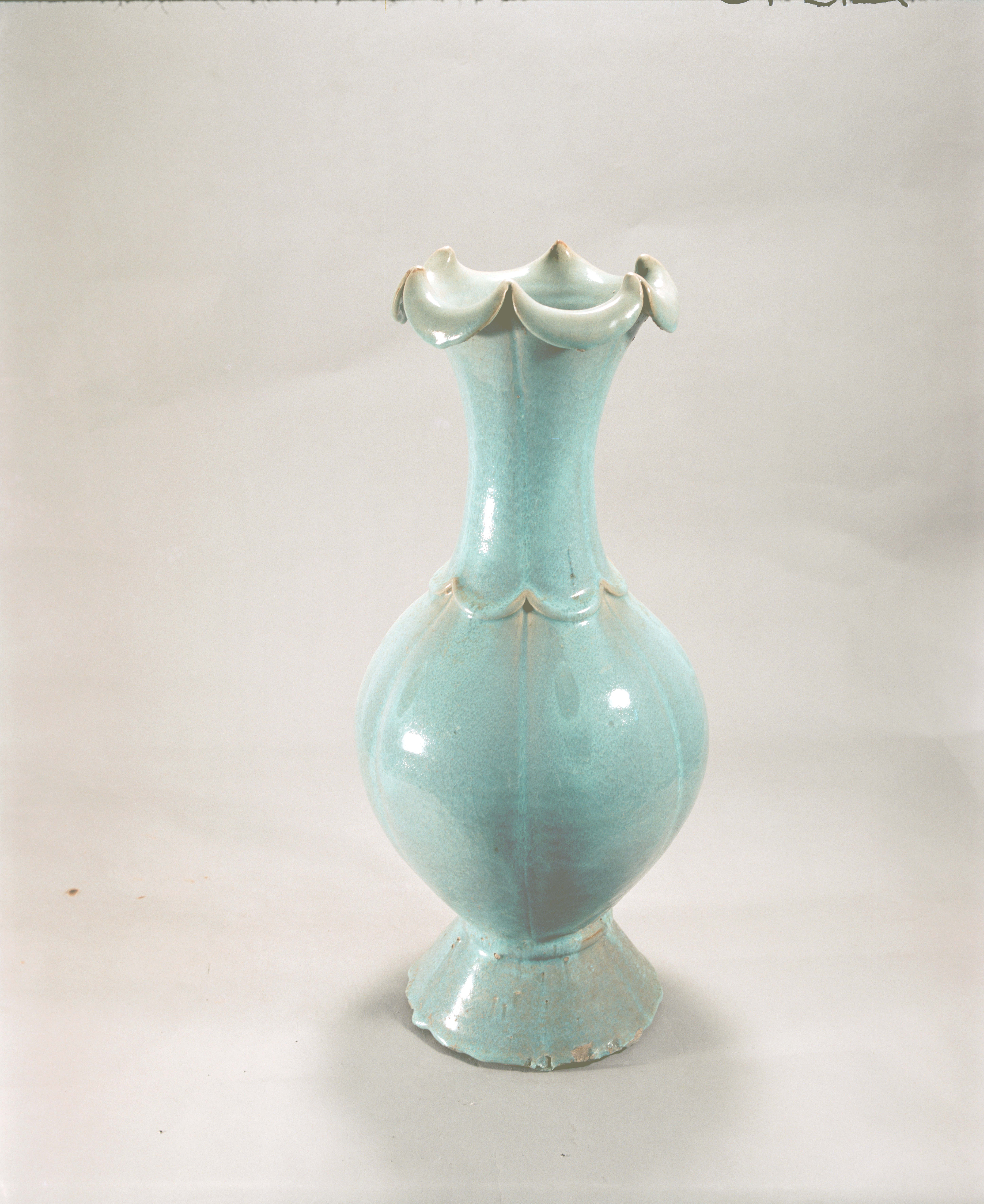Date: Yuan Dynasty (1271-1368)
Provenance: Unearthed in Ruzhou, Pingdingshan, Henan province, 1976
Measurements: Height: 64 cm, Mouth diameter: 22 cm
This vase is one of a pair that was discovered in 1976 in a underground hoard by villagers of Zhaoxi village in Zhifang county, Ruzhou, during digging activities. The other piece is currently housed in the Ruzhou Ruci Museum.
It features a lotus leaf-shaped mouth, a long neck, and a ribbed abdomen with a flared round base. The entire surface is covered with a sky-blue glaze, exhibiting a clean glaze layer with minute spots and a crackled pattern all over.
The vase with a foliate mouth rim (huakou ping) first appeared in the Tang Dynasty (618-907) and saw popularity during the Song Dynasty (960-1279), Jurchen Jin Dynasty (1115-1234) and Yuan Dynasty, being named after its mouth resembling an open flower.
Various kilns, including Jingdezhen, Cizhou, and Yaozhou, produced vases of this kind.
The two sky-blue glazed vases with lotus leaf-shaped mouths, unearthed in Ruzhou, Henan province, showcase distinctive shapes, uniform glazing, and a tall form. They stand as exquisite examples of Jun kiln ceramics from the Yuan Dynasty unearthed in Henan, highlighting the remarkable achievements of Jun ware in the region. Notably, these vases are currently the two largest pieces among the Jun ware ceramics of the Jurchen Jin and Yuan dynasties unearthed in Henan.

